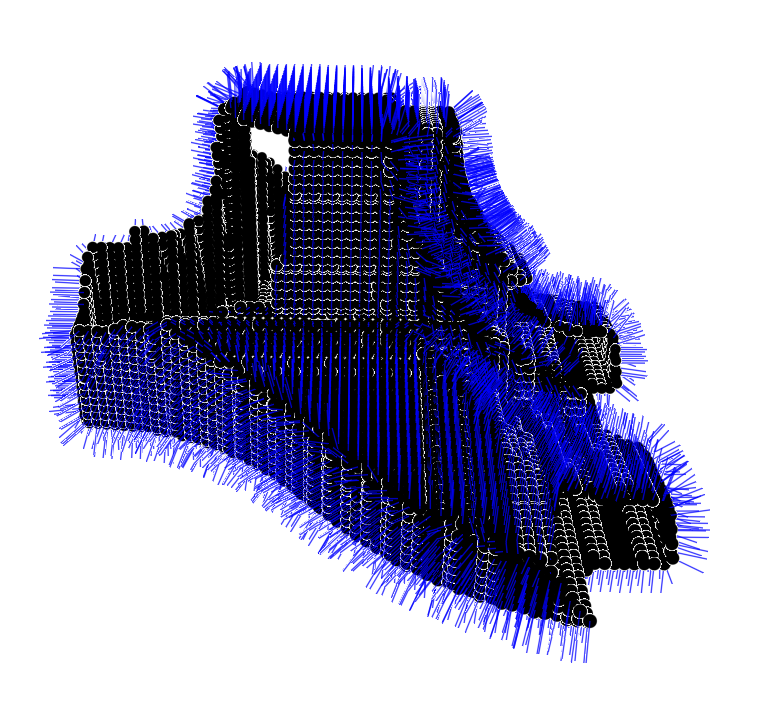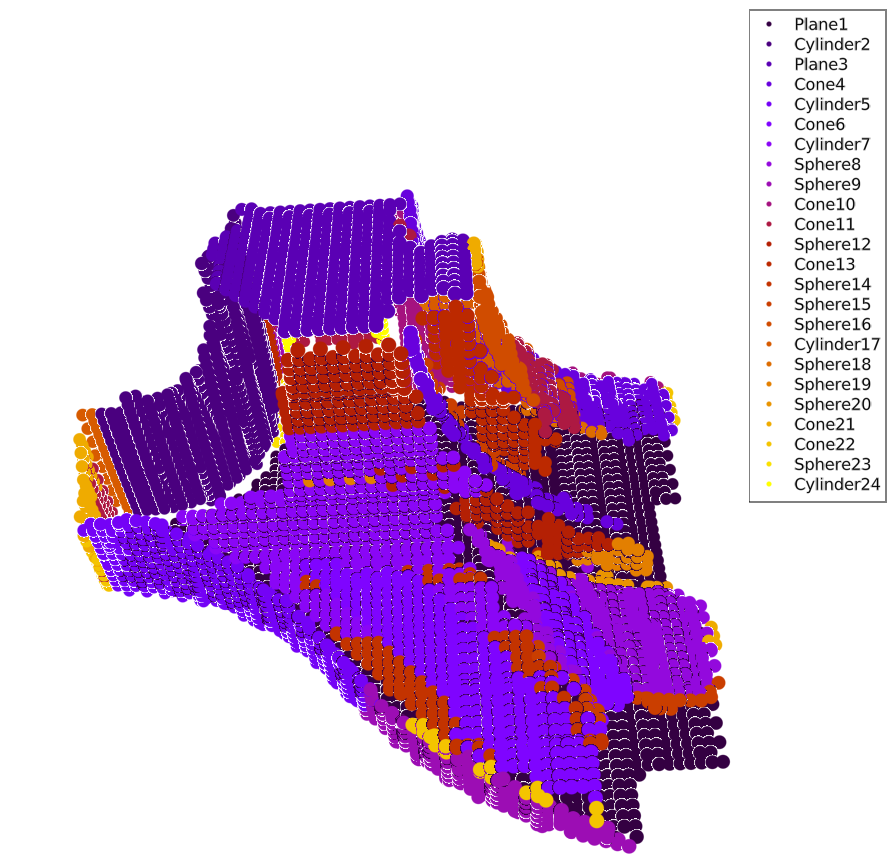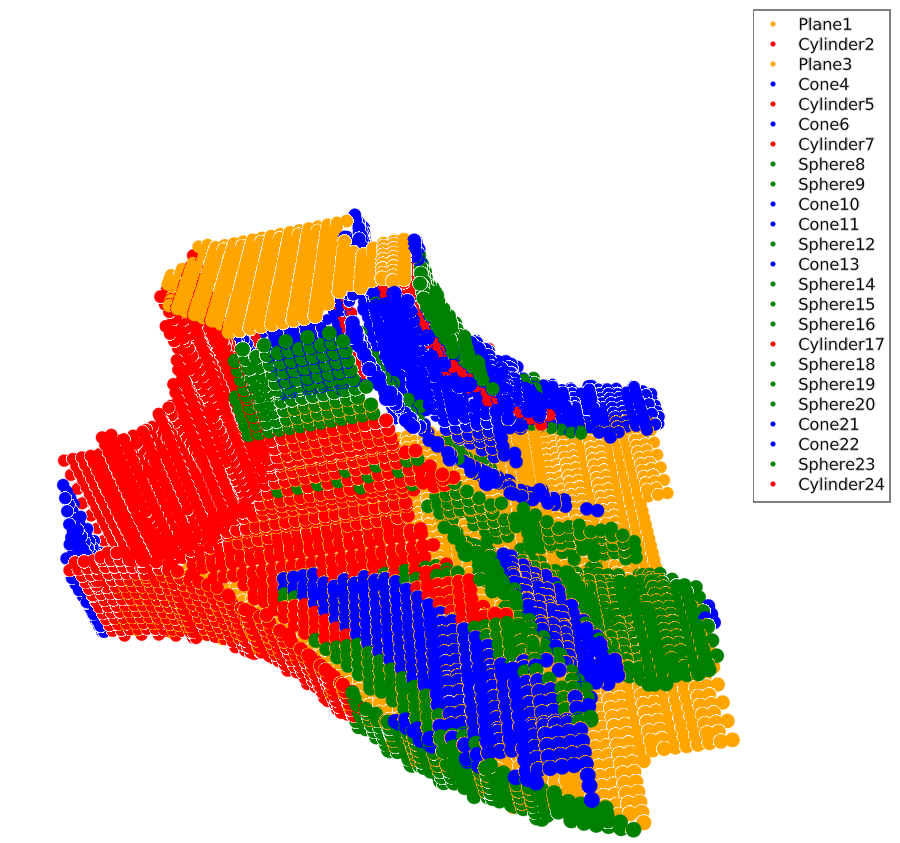Example
This page guides you through the use of RANSAC.jl. A public dataset is used, that was published by Schnabel et al.and is accessible here.
R. Schnabel, P. Degener, R. Klein "Completion and Reconstruction with Primitive Shapes", in Computer Graphics Forum (Proc. of Eurographics), Vol. 28, No. 2, pages 503-512
Read the algorithm description here to get a full understanding of the algorithm and its parameters.
Loading the data
As MeshIO and other softwares had troubles opening the _input.obj files, I used MeshLab to open them and export to non-binary encoded PLY.
julia> using FileIO
julia> m = load("fandisk_input.obj");Constructing a RANSACCloud
Currently the package only handles vectors of Float64.
julia> using RANSAC
julia> pc = RANSACCloud(m.position, m.normals, 8);Set the parameters
Check the Short algorithm description and Parameters pages to understand the parameters.
julia> p = ransacparameters()
(iteration = (drawN = 3, minsubsetN = 15, prob_det = 0.9,
shape_types = UnionAll[FittedPlane, FittedCone, FittedCylinder, FittedSphere],
τ = 900, itermax = 1000, extract_s = :nofminset, terminate_s = :nofminset),
common = (collin_threshold = 0.2, parallelthrdeg = 1.0),
plane = (ϵ = 0.3, α = 0.08726646259971647),
cone = (ϵ = 0.3, α = 0.08726646259971647, minconeopang = 0.03490658503988659),
cylinder = (ϵ = 0.3, α = 0.08726646259971647),
sphere = (ϵ = 0.3, α = 0.08726646259971647, sphere_par = 0.02))
julia> newparams = (ϵ=0.05, α=deg2rad(10),)
(ϵ = 0.05, α = 0.17453292519943295)
julia> p = ransacparameters(p, sphere=newparams, cone=newparams, plane=newparams, cylinder=newparams, iteration=(τ=50, itermax=100_000,))
(iteration = (drawN = 3, minsubsetN = 15, prob_det = 0.9,
shape_types = UnionAll[FittedPlane, FittedCone, FittedCylinder, FittedSphere],
τ = 50, itermax = 100000, extract_s = :nofminset, terminate_s = :nofminset),
common = (collin_threshold = 0.2, parallelthrdeg = 1.0),
plane = (ϵ = 0.05, α = 0.17453292519943295),
cone = (ϵ = 0.05, α = 0.17453292519943295, minconeopang = 0.03490658503988659),
cylinder = (ϵ = 0.05, α = 0.17453292519943295),
sphere = (ϵ = 0.05, α = 0.17453292519943295, sphere_par = 0.02))Run!
The ransac() function runs the iteration.
julia> extr, _ = ransac(pc, p, true, reset_rand=true);See the results
The RANSACVisualizer package provides a few utility functions to check the results (check the docs for function signatures).
Check the input
The showgeometry() function shows a mesh and its normal vectors:
julia> showgeometry(m, arrow=0.3; show_axis = false)
Results colored randomly
The showshapes() function provides this functionality.
julia> showshapes(pc, extr; show_axis = false)
Results colored according to their type
The showbytype() function provides this functionality.
julia> showbytype(pc, extr; show_axis = false)